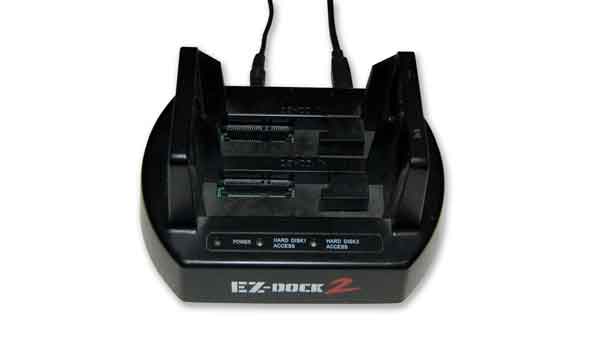When it comes to repairing computers, there are times when I have to be able to access Hard Disk Drives (HDD), Solid State Drives (SSD), or CD/DVD drives outside of a laptop or desktop case. That is when I need to use a drive adapter or docking station. So here are some of my favorite drive adapters and dock stations.

Having a power supply or motherboard fail can be a real pain in the butt. You cannot get your computer to start up, but you cannot even get to any of your documents or settings. That is when having a second computer and a drive adapter or docking station comes in handy.
Using a drive adapter or docking station can convert an HDD or SSD drive to a USB device. And if you use a drive adapter, you can connect a CD/DVD drive to an ultra-thin laptop and use it a record or playback CDs or DVDs.
Now I have several different drive adapters and docking stations that I use for different uses. The majority of them are USB 3.0, but I do have a few that are USB 2.0.
The easiest one to use is a drive adapter that attaches directly to the back of the device. This type is what I use to connect a CD/DVD drive to ultra-thin laptops that do not have CD/DVD drive. I also use it with desktop computers with CD/DVD drives that do not work.

Photo of a single drive adapter
Now the majority of drive adapters and docking stations can only work with Serial ATA (SATA) drives. The one pictured above works with SATA drives and 2.5" or 3.5" Parallel ATA (PATA) for those 'old school' drives.
And the cool thing about this drive adapter is the power supply for it uses a standard Molex connector. You can use it to power up any older device that has a Molex connection.

Photo of a single drive docking station
The most common docking station is for a single SATA drive. The beautiful thing about docking stations is they have power buttons, so you do not have to disconnect the USB connection before disconnecting the power supply.

Photo of a multiple drive docking station
You can also get docking stations that can hold more than one drive. These come in handy if you are cloning one drive to another. They can also be used to recreate failed RAID (Redundant Array of Independent Disks) arrays.
The downside to docking stations is you can only connect 2.5" or 3.5" HDD's or SSD's to them. If you want to attach a CD/DVD drive, you will need to use a drive adapter.
Using either a drive adapter or docking station is just like using an external drive. Just attach it to a USB port and power it up. Most computers will automatically install a driver and assign it a drive letter. From there, you are ready to go.
6164477c-da9c-46ea-a304-1ad67848e5c8|0|.0|96d5b379-7e1d-4dac-a6ba-1e50db561b04